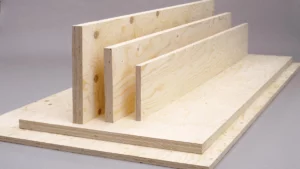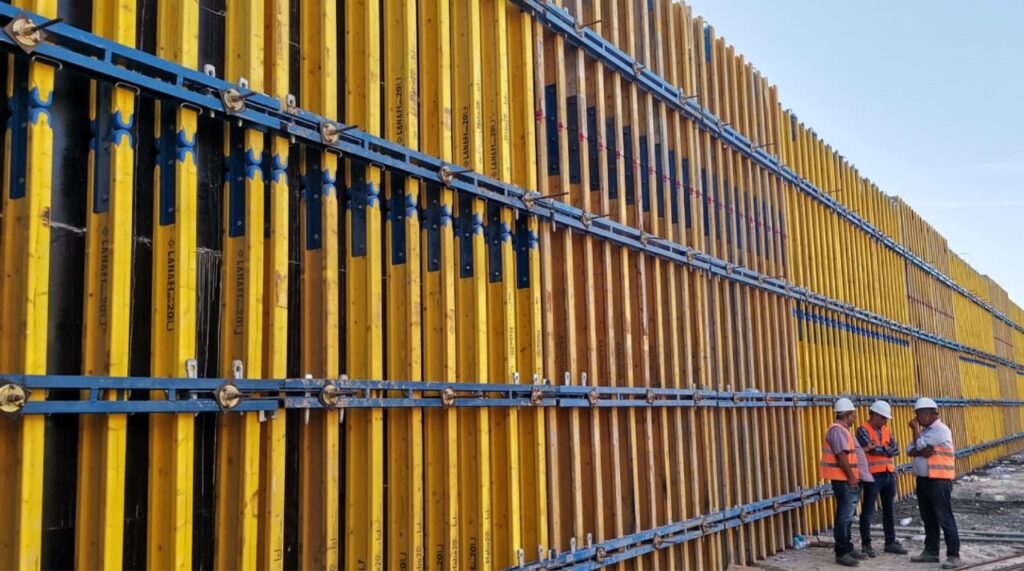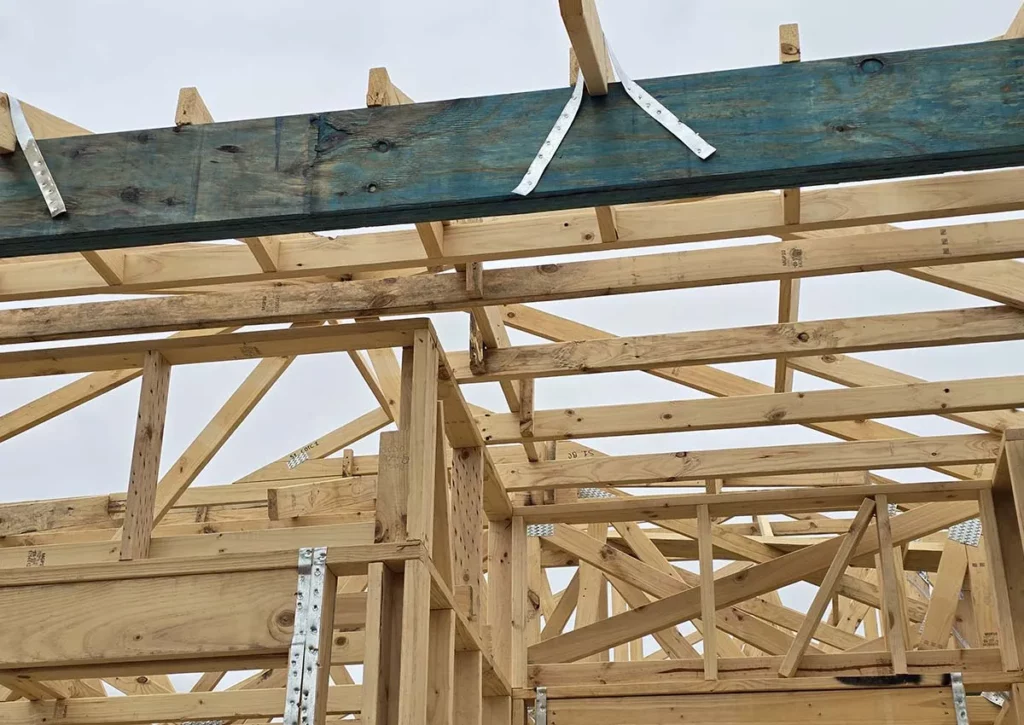
Why Formwork LVL Is Ideal for Heavy-Duty Construction Projects
Formwork is a vital component in the construction industry, serving as a temporary structure that supports concrete until it sets. One of the key materials used in modern formwork systems is Laminated Veneer Lumber (LVL). Often chosen for its superior qualities, Formwork LVL has gained popularity in heavy-duty construction projects due to its strength, durability, and efficiency. This article explores the intricate world of Formwork LVL, focusing on its benefits and application in the realm of heavy-duty construction.
Understanding Formwork LVL: An Overview
The Basics of Formwork LVL
Laminated Veneer Lumber (LVL) is an engineered wood product made from layers of wood veneer that are glued together under heat and pressure. This process results in a material that possesses uniform strength and stability, making it an excellent choice for formwork. Unlike traditional solid wood, LVL minimizes the risk of warping and splitting, which can seriously compromise structural integrity.
Formwork LVL is specifically designed to handle heavy loads and withstand the harsh conditions often encountered on construction sites. This engineered wood can be cut and shaped to fit various formwork designs, allowing for versatility in configuration and application. Its adaptability means that it can be utilized in a wide range of projects, from residential buildings to large-scale commercial structures, making it a favorite among contractors and builders alike.
Key Features of Formwork LVL
The effectiveness of Formwork LVL in construction projects can be attributed to a variety of its key features. First, its high load-bearing capacity allows it to support significant weight without failure. Second, its resistance to moisture makes it suitable for various environmental conditions, reducing the likelihood of damage during the concrete curing process.
Additionally, Formwork LVL is known for its ease of handling and installation. Its lightweight nature makes transportation and setup on-site considerably faster, further optimizing project timelines. The precision with which LVL is manufactured results in a consistent product that fits together seamlessly, enhancing the overall efficiency of the construction process. Furthermore, the use of LVL can lead to cost savings in both labor and materials, as its durability means that it can be reused multiple times across different projects, thereby maximizing return on investment.
Moreover, Formwork LVL is not only practical but also environmentally friendly. The production of LVL utilizes fast-growing trees, which are often sourced from sustainable forests. This aspect contributes to a reduced carbon footprint compared to traditional lumber, aligning with the growing demand for eco-conscious building materials. As the construction industry increasingly shifts towards sustainable practices, the adoption of LVL in formwork applications is likely to rise, making it an integral part of modern construction methodologies.

The Role of Formwork LVL in Heavy-Duty Construction
Formwork LVL in Infrastructure Development
Infrastructure projects, such as bridges, tunnels, and highways, often require formwork systems capable of handling extreme loads and stresses. Formwork LVL excels in these situations due to its superior strength and stiffness. The material can be configured to create custom molds that fit the specific needs of an infrastructure project.
Construction teams utilize Formwork LVL to create deep foundations and retaining walls, where the load-bearing demands are particularly high. Its ability to withstand heavy pressures without deformation ensures that concrete sets perfectly, leading to enhanced durability of the infrastructure once completed. Additionally, the lightweight nature of LVL allows for easier transportation and installation on-site, reducing labor costs and time delays. This efficiency is particularly crucial in large-scale infrastructure projects where every hour of downtime can lead to significant financial losses.
Furthermore, Formwork LVL’s resistance to moisture and environmental factors makes it an ideal choice for projects in varying climates. It can be treated to resist rot and decay, which is essential for structures that will be exposed to the elements over long periods. This durability not only prolongs the lifespan of the formwork itself but also contributes to the overall longevity of the infrastructure being built.
Formwork LVL in Commercial Construction
The commercial construction sector also benefits greatly from the use of Formwork LVL. High-rise buildings and large commercial spaces require formwork solutions that are lightweight yet capable of bearing heavy loads. Formwork LVL provides an ideal balance, allowing for quick assembly and disassembly while ensuring structural reliability throughout the curing process.
Moreover, the aesthetic flexibility of LVL allows architects and builders to design more complex and visually appealing structures. The smooth finish of LVL can lead to less material waste during form release and finishing, which is critical in achieving cost-effectiveness in commercial projects. This adaptability also means that Formwork LVL can be used in a variety of architectural styles, from modern minimalist designs to more traditional structures, making it a versatile choice for any commercial endeavor. Read more about waste at https://epd.punjab.gov.pk/solid_waste
In addition, the ability to reuse Formwork LVL multiple times enhances its sustainability profile. As the construction industry increasingly focuses on reducing waste and adopting eco-friendly practices, the reusability of LVL formwork aligns perfectly with these goals. This not only minimizes the environmental impact but also offers significant cost savings over time, as builders can rely on the same formwork for multiple projects without the need for constant replacement. The integration of Formwork LVL into commercial construction thus represents a forward-thinking approach that combines efficiency, sustainability, and aesthetic appeal.
Benefits of Using Formwork LVL in Construction Projects
Durability and Strength of Formwork LVL
One of the primary advantages of Formwork LVL is its durability. It is engineered to withstand the rigors of construction environments, including exposure to various weather conditions and heavy loads. This resilience translates into reduced maintenance costs and longer lifecycle performance, substantial benefits for contractors and project owners alike.
Furthermore, the consistent quality of Formwork LVL mitigates the risk of material failures that can lead to construction delays and increased labor costs. Its strength ensures that concrete sets uniformly, reducing the likelihood of defects in the final structure. The engineered nature of LVL allows it to maintain structural integrity under stress, making it an ideal choice for high-rise buildings and other demanding applications where safety and reliability are paramount.
In addition to its inherent strength, Formwork LVL also offers excellent resistance to warping and twisting, which can be common issues with traditional timber formwork. This stability not only enhances the quality of the concrete finish but also contributes to the overall safety of the construction site. With fewer adjustments needed during the pouring process, project managers can focus on other critical aspects of the build, ensuring a smoother workflow and adherence to timelines.
Cost-Effectiveness of Formwork LVL
When considering the overall costs of a construction project, the use of Formwork LVL can be more cost-effective compared to traditional alternatives. Its longer lifespan reduces the frequency of replacements, while its lightweight nature decreases transportation costs.
Additionally, the quick installation process associated with Formwork LVL leads to significant labor savings. With faster assembly times, crews can move on to other tasks sooner, optimizing project schedules and lowering overall labor costs. Ultimately, these factors contribute to better profitability for construction firms. Moreover, the reduced need for extensive scaffolding or support structures when using Formwork LVL can further streamline the construction process, allowing for a more efficient allocation of resources.
Another financial advantage lies in the reduced risk of project delays due to weather-related issues. Traditional formwork can be susceptible to damage from rain or extreme temperatures, leading to costly downtime. In contrast, Formwork LVL’s engineered properties allow it to perform reliably under a wider range of conditions. This reliability not only helps maintain project timelines but also enhances the overall predictability of costs associated with labor and materials, providing a clearer financial picture for stakeholders involved in the project.
Safety Aspects of Using Formwork LVL
Safety Standards for Formwork LVL
Safety is of paramount importance in the construction industry, and the use of Formwork LVL helps to adhere to strict safety standards. This engineered wood product is designed to perform reliably under heavy loads, minimizing the risk of collapses or incidents on the job site.
The structural integrity of Formwork LVL is rigorously tested to ensure it meets industry safety guidelines. Compliance with these standards not only safeguards workers but also contributes to overall site safety, fostering a culture of responsibility and risk management. Moreover, Formwork LVL is often manufactured using sustainable practices, which not only enhances its appeal as a safe choice but also aligns with the growing emphasis on environmentally responsible construction methods. This dual focus on safety and sustainability makes Formwork LVL a preferred option among modern builders. Click here to find more about sustainable.
Risk Mitigation with Formwork LVL
Utilizing Formwork LVL plays a vital role in risk mitigation strategies for construction projects. Its inherent properties reduce the chances of material failures, which can lead to costly accidents. The engineered nature of LVL also ensures consistent performance, so builders can predict how the materials will behave under various conditions.
Additionally, training workers on the proper handling and installation techniques for Formwork LVL increases safety awareness, further reducing accident risks. Implementing robust risk management protocols ensures that projects proceed smoothly and efficiently. Regular inspections and maintenance of the formwork system are also critical components of a comprehensive safety strategy. By identifying potential weaknesses or wear and tear early, teams can address issues proactively, ensuring that the formwork continues to perform optimally throughout the construction process. This proactive approach not only enhances worker safety but also contributes to the overall success and timeliness of the project, demonstrating the importance of vigilance in construction safety practices.

Future of Heavy-Duty Construction with Formwork LVL
Innovations in Formwork LVL
The future of heavy-duty construction embraces ongoing innovations in Formwork LVL technology. Researchers are continuously seeking to enhance the properties of LVL, improving its sustainability and performance. For instance, developments in adhesive formulations and veneer treatments are making LVL more durable and easier to work with.
Additionally, the advancement of digital modeling and design software allows for better planning and execution of formwork systems, ensuring that LVL is used to its fullest potential. Increased automation in the construction process further enhances efficiency, making heavy-duty projects more manageable and less labor-intensive.
Sustainability and Formwork LVL
Sustainability is a growing concern in the construction industry, and Formwork LVL is poised to play a significant role. Being made from renewable wood sources, it presents an eco-friendly alternative to traditional materials. The manufacturing processes for LVL also focus on minimizing waste, further enhancing its sustainability credentials.
As the demand for environmentally responsible construction solutions increases, Formwork LVL’s ability to meet these requirements positions it as a preferred choice for forward-thinking construction firms. The integration of sustainable practices in construction not only benefits the environment but also appeals to an increasingly eco-conscious market.
In summary, Formwork LVL proves to be an ideal choice for heavy-duty construction projects, combining strength, durability, cost-effectiveness, and safety. As the industry evolves, the ongoing development of this innovative material will likely shape the future of construction, making it more efficient and sustainable.
Read more at: Comparing LVL Timber Formwork to Traditional Options
